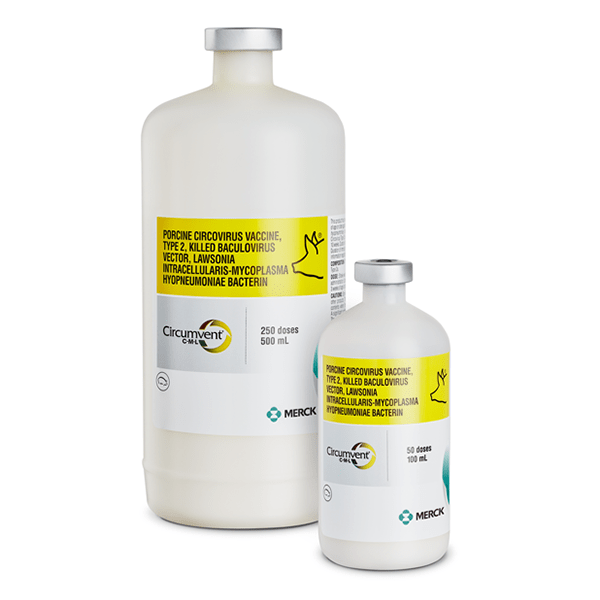
Respiratory Health
Swine respiratory diseases can have a huge impact on your herd’s daily performance as animals redirect energy to the immune system instead of growth.
Take control with Merck Animal Health respiratory solutions.

For the vaccination of healthy swine against disease caused by Porcine Circovirus (Types 2a and 2d), Mycoplasma hyopneumoniae…

For the vaccination of healthy swine against Porcine Circovirus (Type 2) and Mycoplasma hyopneumoniae.




